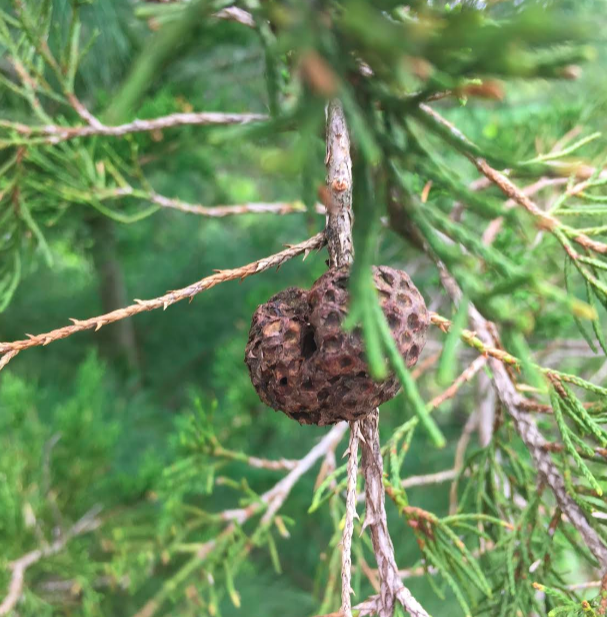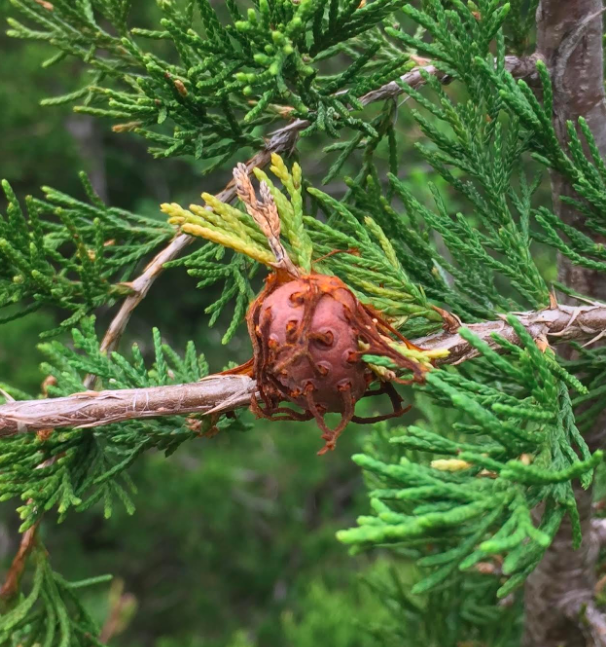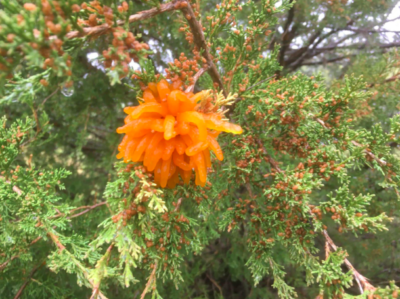With the arrival of warmer weather in southern Minnesota also comes a strange and fascinating species of fungus to the Cowling Arboretum. This is the Cedar Apple Rust, a fungus from the family Pucciniaceae, most of which require two host species to survive. This fungus undergoes many life cycles, and switches between two hosts at different times of the year. As the name suggests, this fungus can be found living on trees from the juniper family (usually the red cedar) and on apple or crabapple trees; spores from this fungus will migrate between these two different host species.
The form present in the Arb now can be found on cedar trees. The growths are about the size of a dollar coin in width, and are a brown and rusty-orange color. These growths form from one type of spore called a teliospore. After warm spring showers in April or May, they produce gelatinous horn-like structures (see photo). These horns will dry up and germinate, producing basidiospores. These spores will float in the air from the cedar to a nearby apple or crabapple tree. Here they will form small yellow or orange spots and create spermatia, the third type of spore. These are contained in a sticky goo that insects carry to another fertilization spot. These spores grow on the underside of a leaf, and produce aeciospores, the fourth and final spore type. These spores will float in the air to another cedar tree, and eventually grow the gelatinous horns again, starting its life cycle over again. This entire life cycle takes years to complete!

Rust growth on cedar tree before spring rains. 
Dried-up rust growth.
This fungus infects the hosts, however usually does not cause significant damage. On juniper trees the growths will dry out and can stay on the tree for many years, and usually the twigs on which it grows dies. On apple or crab-apple trees the leaves, fruit and twigs can be infected, and can cause death of all three in more serious cases. This fungus does not usually cause an entire host to die.
This fungus is a magnificent, and perhaps a frightening, example of the complexity of organisms within our own ecosystem. Many growths of this fungus can be found easily in the eastern end of the upper arboretum on the middle loop trail. Go check them out!












